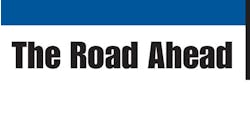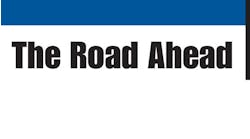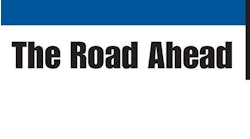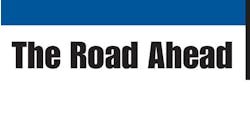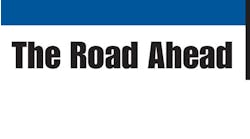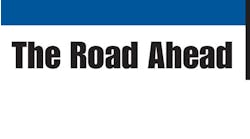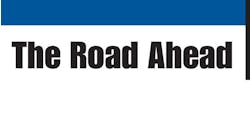AFTER Hurricane Andrew tossed one of Randall Smalley's rented motor homes down a Florida highway, the rental company president gained an insight that forever changed his business.
Smalley's company, Cruise America, has 3,000 motor homes that it rents to tourists from the United States and European countries. When Hurricane Andrew blew through south Florida in 1992, Cruise America was based in Miami where the company was started by Smalley's father, Robert, a former Hertz Rent-a-Car executive. Shortly after the hurricane, Cruise America moved its headquarters to Mesa, Arizona.
Not all of the motor homes could be moved away from Miami before the hurricane hit. The body of the damaged motor home absorbed the impact and protected the truck chassis.
Other than having broken mirrors and a cracked windshield, the chassis was undamaged and had only 37,000 miles on the odometer. To replace the entire vehicle would cost $55,000 including $20,000 for a new cutaway van chassis and $35,000 for a motor home body.
Think of the chassis as one replaceable item and the body as another. Separately, the two can have more value.
Refurbishing Motor Homes In 1990, Cruise America began a regular program of refurbishing its motor home bodies and remounting them on new cutaway chassis. On the old chassis, which have 75,000 to 80,000 miles, Cruise America installs van or platform bodies and sells the truck for about $13,500.
The Flyer division has 30 employees that refurbish motor homes and mount commercial truck bodies on the old chassis. Cruise America has a 20,000-sq-ft area in the warehouse at its headquarters in Mesa where it set up workbays with air and electrical lines and other equipment.
The company's primary goal with the refurbishing program was to get a new chassis under the coach, says Jerry Finnigan, general manager of the Flyer Body Manufacturing Division of Cruise America. Selling used trucks is just a way to dispose of Cruise America's unneeded assets.
"Because they are already depreciated, we don't have to get that much for the commercial trucks," says Bob Smalley Jr, executive vice-president of Cruise America. "We want savings in our motor home business."
Reducing Capital Costs The company can mount refurbished motor homes on five new chassis for about $100,000 compared to purchasing three or four new motor homes for the same price, Smalley says. By refurbishing a motor home instead of purchasing a new one, Cruise America saves $8,000 to $12,000 per vehicle.
"Think of a motor home as a house," Smalley Jr says. "When it's time to remodel, you don't bulldoze the house."
Understanding the capital costs of its operating investment was the catalyst that drove Cruise America to refurbish motor homes and mount commercial truck bodies on the old chassis, Smalley Jr says. Remounting motor homes is financially feasible because of a quirk in the used market for recreational vehicles.
"The market is not aware of the true value of a used motor home," Smalley Jr says. "It's worth more in two pieces than in one."
A cutaway chassis with 75,000 to 80,000 miles is perfectly suited to be reused as a commercial truck, says Randall Smalley. New chassis such as the Ford E-350 with a Triton V-10 engine are very durable and will have a service life well past 100,000 miles.
When a platform body is mounted on a cutaway chassis, the rear of the cab must be extended to meet FMVSS requirements for seat travel, Finnigan says. Cruise America manufactures fiberglass extensions to enclose cabs of cutaway chassis mounted with platform bodies. The 15-inch extensions have opera windows and a bench seat on the inside that lifts up for tool storage.
Motor homes are refurbished after about three years when the chassis has about 80,000 miles on the odometer. The refurbished motor home is mounted on a new chassis.
In the refurbishing shop, the motor home body is made to look new. Carpets and curtains are replaced and countertops and cabinets are resurfaced or replaced.
"It takes more time to refurbish the interior of a motor home than to remount the motor home on a new chassis," Finnigan says.
Fuel, propane, and electrical lines must be connected when remounting the motor home on a new chassis. In addition to the chassis 12-volt electrical system, motor homes have a generator-powered 110-volt electrical system that must be connected to the new chassis.
Mounting Truck Bodies In one workbay, a gantry with a five-ton overhead crane mounts the refurbished motor homes on new cutaway chassis. The same gantry is used to mount new van and platform bodies on the old chassis.
In some cases, wheelbases must be shortened before truck bodies are mounted on the chassis. Cruise America shortens the frame rails in its shop. Driveshafts are sent to a company in Phoenix to be remanufactured.
Before the gantry lowers the motor home onto a new chassis, a tubular steel crossmember is welded across the top of the frame rails at the rear. The subframe of the refurbished motor home body is welded and bolted to the new chassis.
Better Rental Vehicle After a motor home is refurbished, it is more suitable for the rental business than the original vehicle, Finnigan says. The materials and workmanship used to refurbish the motor homes are more durable.
"We know what breaks and wears out," Finnigan says. "In our rental fleet, Cruise America needs industrial-grade bullet-proof motor homes with a long service life."
Eventually, the company may begin building its own motor homes for rental purposes, says Randall Smalley. At its Mesa warehouse, the company has enough space to build motor home bodies. With its Ford and Chevrolet chassis pools, Cruise America has a ready supply of cutaway chassis.
"We have the knowledge, space, and we can get the equipment needed to build motor home coaches," Smalley says.
Cruise America designed and built 40 customized motor homes leased by the US Olympic Committee to help televise the torch relay for the 1996 Summer Olympic Games in Atlanta. The hybrid motor homes have living quarters in front and van body construction at the rear.
Television crews shot the torch relay with cameras stationed on Maxon tailgate lifts installed on the rear door frames of the motor homes. Thieman tailgate lifts are now standard. Since they were built with roll-up doors, Cruise America called the hybrid vehicles "motor homes with garages."
Summer Olympic Vehicles Following the Summer Olympics, the vehicles were sold immediately at several Cruise America's hubs. The company operates 16 hubs in the US and Canada. Cruise America designed several other models of the "motor home with a garage" that it named the Fun Mover.
Fun Movers are now built by another manufacturer, Thor in Elkhart, Indiana. Fun Mover 27- and 31-ft bodies with 8 1/2- and 10-ft garages are mounted on Ford SuperDuty cutaway chassis. Larger Fun Movers up to 38-ft long with 16-ft garages are built and mounted on medium-duty chassis.
Another manufacturer was chosen to build the Fun Movers because Cruise America wants its Flyer Body Manufacturing division to concentrate on refurbishing and remounting the motor homes in its rental fleet. However, the Flyer division has built several 14-ft FRP-plywood van bodies.
Currently, Cruise America has 600 refurbished motor homes in its rental fleet. The company would like to refurbish 540 motor homes each year.
"That's the magic number for us," Finnigan says. "If we refurbish 540 motor homes and sell 300 commercial trucks, it's `mission accomplished.'"
The company plans to refurbish or sell as commercial trucks 1,000 motor homes and chassis each year, Finnigan says. Chassis sold as commercial trucks are replaced with new motor homes purchased for the rental fleet.
"This way, my fleet of 3,000 motor homes will turn over once every three years," says Bob Smalley Jr.
Refurbishing Increases Profitability Smalley credits his motor home refurbishing program with increasing Cruise America's profitability in a highly competitive market. In fiscal year 1996, the company reported net earnings of $1 million or 17 cents per share up from three cents per share in 1995. Truck sales return a profit, but it is small compared to income from motor home rentals.
"The rental business for motor homes is seasonal, but our sales of commercial trucks adds consistency to our business year-round," Smalley says.
The picture is even brighter for fiscal 1997, Smalley says. Cruise America ended with net earnings of $2.7 million or 47 cents per share.
"Our forward momentum is sustainable," Randall Smalley said in a letter to the company's shareholders. "The principal reason for my optimism is our conversion to a nearly all modular motor home fleet."
